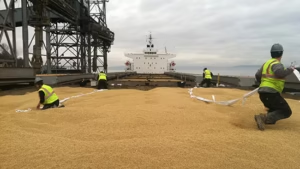Spices are integral to culinary traditions across the world, adding flavor, aroma, and essential nutrients to a variety of dishes. However, like all agricultural products, spices are susceptible to a range of pests, microbial contamination, and deterioration during storage and transport. To safeguard these valuable commodities, the process of fumigation has become a critical step in ensuring the safety, quality, and shelf-life of spices, particularly those destined for export. This article explores the fumigation of spices in detail, including its importance, the methods used, regulatory considerations, and the potential concerns surrounding its application.
What is Fumigation of Spices?
Fumigation is a post-harvest treatment used to disinfect and sterilize spices by exposing them to gaseous or vaporized chemicals. These gases penetrate the spice material, targeting and eliminating pests such as insects, larvae, and microorganisms like molds or bacteria. The fumigation process helps ensure that the spices are free from contamination before they reach consumers or international markets. Fumigation is particularly important for spices in bulk storage or those intended for export, where food safety and quality standards must be strictly adhered to. In addition to pest control, fumigation can also contribute to the preservation of the flavor, aroma, and visual appeal of spices.
Why Fumigate Spices?
Fumigation is essential for a number of reasons, ranging from pest control to meeting international food safety regulations. Let’s take a closer look at the key benefits:
- Pest ControlSpices are often stored in large quantities and can be easily infested by a variety of pests, such as:
- Weevils: These pests are common in dried products and can damage the texture of the spice.
- Moths: The larvae of these insects feed on the spice, leading to spoilage.
- Beetles: A common pest that infests grains and seeds, including spices like cumin, coriander, and turmeric.
- Microbial Contamination PreventionSpices are naturally exposed to environmental elements like air, moisture, and soil during cultivation and harvest. These elements can introduce bacteria, fungi, and molds that pose health risks to consumers. Fumigation effectively eliminates pathogens that could lead to foodborne illnesses or spoilage. Additionally, molds like Aspergillus and Penicillium can produce aflatoxins, which are carcinogenic compounds. Fumigation helps minimize the risk of aflatoxin contamination, ensuring the spices are safe for consumption.
- Compliance with International Food Safety RegulationsMany countries, especially those in the European Union (EU), United States (USA), and Japan, impose strict regulations on the levels of chemical residues allowed in food products. Fumigation is a widely accepted method to ensure that spices meet these safety standards. Export markets often require that spices undergo fumigation as part of pre-export treatment. Compliance with Maximum Residue Limits (MRLs) set by regulatory authorities ensures that products are acceptable for trade and free from toxic residues.
- Extension of Shelf LifeFumigation plays a crucial role in extending the shelf life of spices. By removing pests and reducing microbial contamination, spices can remain fresh for longer periods, reducing waste and loss due to spoilage. This is particularly important for businesses involved in international trade, where spices may be transported over long distances.
- Improved Quality and HygieneSpices that have undergone fumigation tend to have a cleaner appearance, fresher smell, and higher hygiene standards. This results in a higher-quality product that consumers can trust, making it a preferred choice in both retail and food service sectors.
Common Fumigants Used for Spices
Various fumigants can be used to treat spices, depending on factors such as the type of pest, spice, and regulatory requirements. Below are the most commonly used fumigants:
- Ethylene Oxide (EtO)How it works: Ethylene oxide is a potent sterilizing agent that destroys bacterial and fungal spores and kills insects at all life stages.Use in spices: Widely used for spices like cumin, coriander, turmeric, and chili peppers to eradicate pests and pathogens.Concerns: Ethylene oxide can leave toxic residues on spices if not properly aerated, and its use has been banned or restricted in many countries, including the EU, due to health risks and environmental concerns.
- Methyl BromideHow it works: Methyl bromide is a highly effective fumigant used to eradicate insects and pests by interfering with their respiratory processes.Use in spices: Particularly used in treating grains, seeds, and spices such as black pepper and cardamom.Concerns: While effective, methyl bromide is an ozone-depleting substance and has been phased out in many countries due to its environmental impact. It also poses health risks, requiring strict safety measures during its use.
- Phosphine (Phosphine Gas or Solid Phosphides)How it works: Phosphine gas is released from solid phosphide compounds (e.g., aluminum phosphide) and disrupts the metabolic functions of pests.Use in spices: Commonly used in treating spices, especially pepper, cardamom, and turmeric.Concerns: Phosphine is a relatively safe option, with fewer chemical residues, but it is highly toxic to humans and requires careful handling and ventilation to prevent exposure.
- Carbon Dioxide (CO₂)How it works: CO₂ is used to create a low-oxygen atmosphere in a sealed chamber, suffocating pests.Use in spices: Often used in controlled atmosphere storage for organic or delicately processed spices.Concerns: While safe and environmentally friendly, CO₂ fumigation is slower and requires specialized equipment, making it more costly than chemical alternatives.
- Steam or Heat TreatmentHow it works: This method uses high heat or steam to kill pests without chemicals.Use in spices: Ideal for treating pepper, cloves, and bay leaves.Concerns: While it avoids chemicals, steam treatment can cause flavor changes or reduce the potency of essential oils, making it less suitable for aromatic spices.
Concerns with Fumigation
While fumigation is an essential practice in the spice industry, there are several concerns that need to be addressed to ensure its effectiveness and safety:
- Chemical ResiduesEven after proper aeration, fumigants can leave behind toxic residues on spices. Regulatory agencies set strict Maximum Residue Limits (MRLs) to ensure that the levels of these residues are safe for consumption. If not properly managed, excessive residues could lead to health risks for consumers and trade restrictions.
- Health and Safety HazardsHandling fumigants like phosphine or methyl bromide poses significant health risks to workers. It is crucial that those handling fumigants are properly trained and wear protective equipment to avoid exposure to these toxic chemicals. In addition, fumigants must be carefully contained within fumigation chambers to prevent accidental release.
- Environmental ImpactThe use of fumigants, particularly methyl bromide, has significant environmental implications. Methyl bromide is a chlorine-based substance that depletes the ozone layer. As a result, its use is heavily regulated or banned in many countries. Therefore, the spice industry is increasingly exploring eco-friendly alternatives, such as CO₂ fumigation or steam sterilization.
- Flavor and Quality AlterationSome fumigants can cause changes in the flavor or aroma of spices. For example, turmeric or chili peppers might lose their color or spiciness after fumigation with certain chemicals. This is a particular concern for spices with delicate flavors or volatile oils.
Alternatives to Chemical Fumigation
As awareness of the risks associated with chemical fumigation grows, alternative treatments are being explored. These alternatives often aim to preserve spice quality, reduce environmental impact, and eliminate chemical residues.
- Steam SterilizationA chemical-free method that involves exposing spices to high-temperature steam, effectively killing pests and pathogens. While safe, it requires careful monitoring to prevent the loss of flavor in heat-sensitive spices.
- IrradiationThis method uses ionizing radiation to destroy microorganisms and pests in spices. It is a proven method for sterilizing spices but may raise concerns among consumers about the safety of irradiated products.
- Cold Plasma TreatmentCold plasma is an emerging technology that uses ionized gas to sterilize spices without heat or chemicals. It is still in the experimental phase for spices but holds promise as a non-toxic and environmentally friendly alternative.
- Controlled Atmosphere StorageBy reducing the oxygen levels in storage facilities, pests cannot survive, and contamination risks are minimized. This method is chemical-free, but it requires high investment in storage infrastructure and is slower than fumigation.
Fumigation Procedure: Step-by-Step
Fumigation typically follows these key steps to ensure proper pest control and safety:
- Inspection: Spices are carefully inspected for any signs of infestation or contamination before treatment.
- Placement: The spices are placed in a sealed fumigation chamber or tent, ensuring that the environment is contained to prevent leakage.
- Fumigant Application: The fumigant is released into the chamber, where it mixes with the air and permeates the spice material.
- Exposure: The spices are left exposed to the fumigant for a specific time period, depending on the type of fumigant used.
- Aeration: After treatment, the spices are carefully ventilated to ensure that any residual fumigant is removed before they are handled or packaged.
- Residue Testing: To comply with safety standards, the spices are tested for fumigant residues to ensure they meet MRL guidelines.
- Packaging: Once residues have been cleared and the spices are certified safe, they are packaged for sale or export.
Suggestions
Fumigation is a critical process in the spice industry, ensuring that spices are safe, pest-free, and meet the highest standards of quality. While it offers numerous benefits, it is essential to carefully manage the process to minimize risks associated with chemical residues, environmental impact, and quality degradation. With increasing regulatory pressure and consumer demand for sustainable practices, the spice industry is exploring new alternatives that balance safety, environmental concerns, and product quality. As global trade continues to grow, the fumigation of spices remains an essential tool in preserving the integrity of spices and ensuring that they meet both food safety regulations and consumer expectations.







